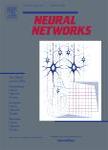版权所有:内蒙古大学图书馆 技术提供:维普资讯• 智图
内蒙古自治区呼和浩特市赛罕区大学西街235号 邮编: 010021

作者机构:Nanjing Univ Sci & Technol Sch Comp Sci & Engn Nanjing 210094 Peoples R China
出 版 物:《NEURAL NETWORKS》 (Neural Netw.)
年 卷 期:2025年第185卷
页 面:107201页
核心收录:
学科分类:1002[医学-临床医学] 1001[医学-基础医学(可授医学、理学学位)] 0812[工学-计算机科学与技术(可授工学、理学学位)] 10[医学]
基 金:National Nature Sci-ence Foundation of China [62276133, 62302219, 62471236] Natural Science Foundation of Jiangsu Province, China [BK20220948] Frontier Technolo-gies R&D Program of Jiangsu [BF2024070]
主 题:One-class learning Image classification Probabilistic model Deep neural network
摘 要:One-class learning has many application potentials in novelty, anomaly, and outlier detection systems. It aims to distinguish both positive and negative samples with a model trained via only positive samples or one-class annotated samples. With the difficulty in training an end-to-end classification network, existing methods usually make decisions indirectly. To fully exploit the learning capability of a deep network, in this paper, we propose to design a deep end-to-end binary image classifier based on convolutional neural network with input of image and output of classification result. Without negative training samples, we establish a probabilistic model driven by an energy to learn the distribution of positive samples. The energy is proposed based on the output of the network which subtly models the deep discriminations into statistics. During optimization, to overcome the difficulty of distribution estimation, we propose a novel particle swarm optimization algorithm based sampling method. Compared with existing methods, the proposed method is able to directly output classification results without additional thresholding or estimating operations. Moreover, the deep network is directly optimized via the probabilistic model which results in better adaptation of positive distribution and classification task. Experiments demonstrate the effectiveness and state-of-the-art performance of the proposed method.